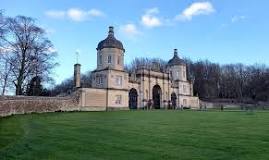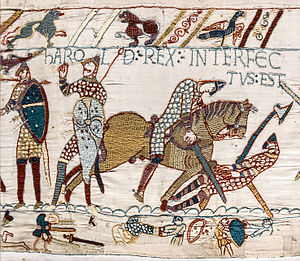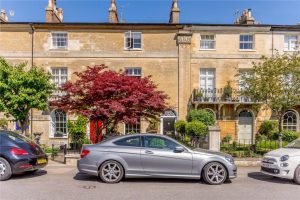Burghley Park and some of Stamford walk 11/01/24
Commentary by Anne Osborne, pictures by Hardley Anyone
 Due to the waterlogged nature of the countryside on the original walk planned, I decided to lead a town walk mostly on paths rather than ending up to the knees in water and mud.
Due to the waterlogged nature of the countryside on the original walk planned, I decided to lead a town walk mostly on paths rather than ending up to the knees in water and mud.
A band of 19 people met in Burghley new car park and set off across the grounds , with a brief detour to the Lion Bridge and then out through the Bottle Lodge entrance, also known as the Pepper Pots.
These were built in 1801 in retro Elizabethan style. We crossed the road and went up the hill to the residential part of Wothorpe with beautiful views across Stamford.
Here you can see a mixture of architecture from Victorian , through all decades of the twentieth century right up to the current day all cheek by jowl, but mostly with big gates and drives.
 We then went down the hill to follow the A43 back towards Stamford past Fryers Callis Almshouses, over the railway bridge to the Meadows.
We then went down the hill to follow the A43 back towards Stamford past Fryers Callis Almshouses, over the railway bridge to the Meadows.
We followed the car park along the meadows stopping to look at the remains of the Norman castle built according to the plaque in 1068.
Not long after the Battle of Hastings!

Most of the castle is now under the bus station. Passing the Bath House built originally in 1722 due to the unsanitary conditions in the town and refurb’d by the Marquess of Exeter in 1823, now a private house and passing Kings Mill (a mill on this site is mentioned in the Domesday Book), we went up the little cobbled street turning left and on to Austin St.

We then went down Melancholy Walk which is a paved path running parallel to the meadows with a pretty little mill stream beside it. It is said that this is the path taken by condemned men on their way to the gallows which were outside the town wall.

The oven bricks needed replacing every five or six years and the bakery had to close for week to allow them to cool down.
The walk was completed by returning over the meadows, along Water Street and back across Burghley Park.
We completed a loop coming down Tinwell Road and past the lovely Rutland Terrace built 1829-31.
As we went back down the cobbled street I pointed out Askers bakery, where bread is still baked for their shop in town. It had a coal fired oven, not sure if it still does, and could bake 200 loaves in one go.